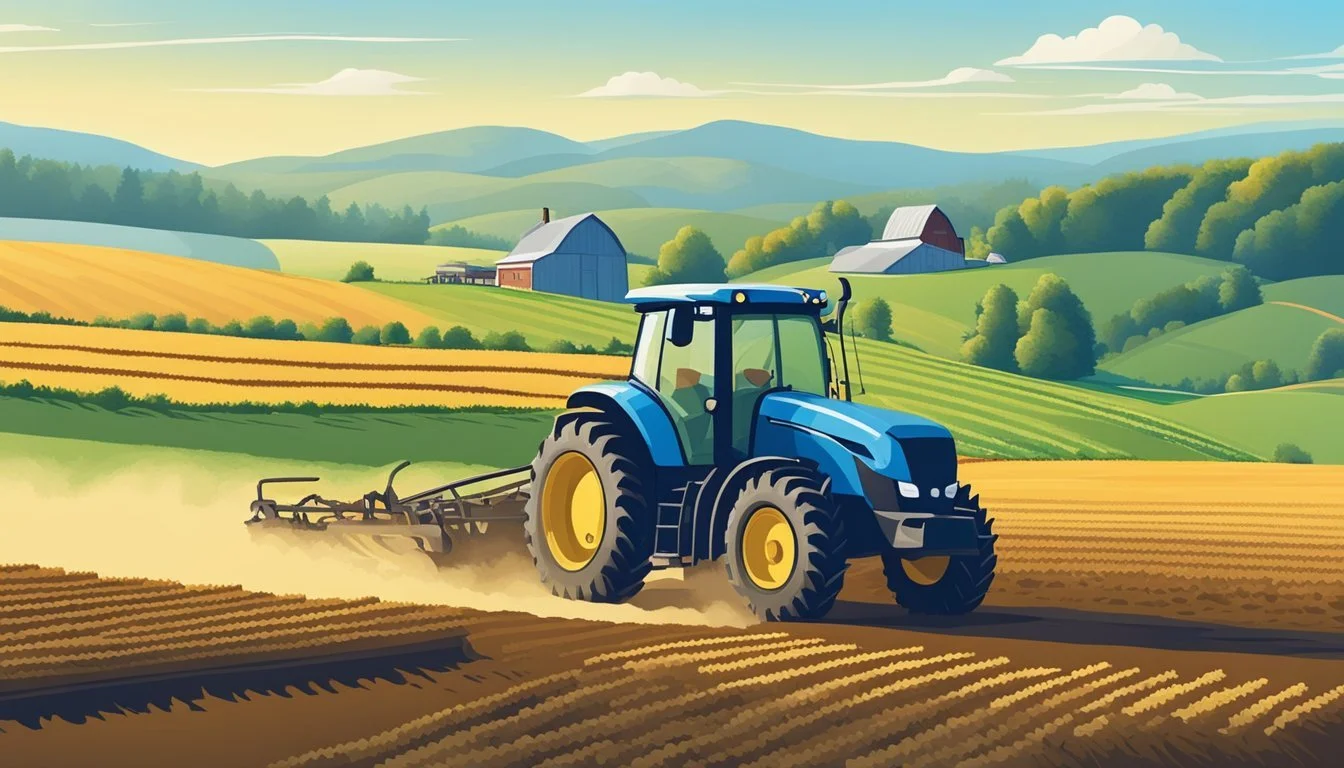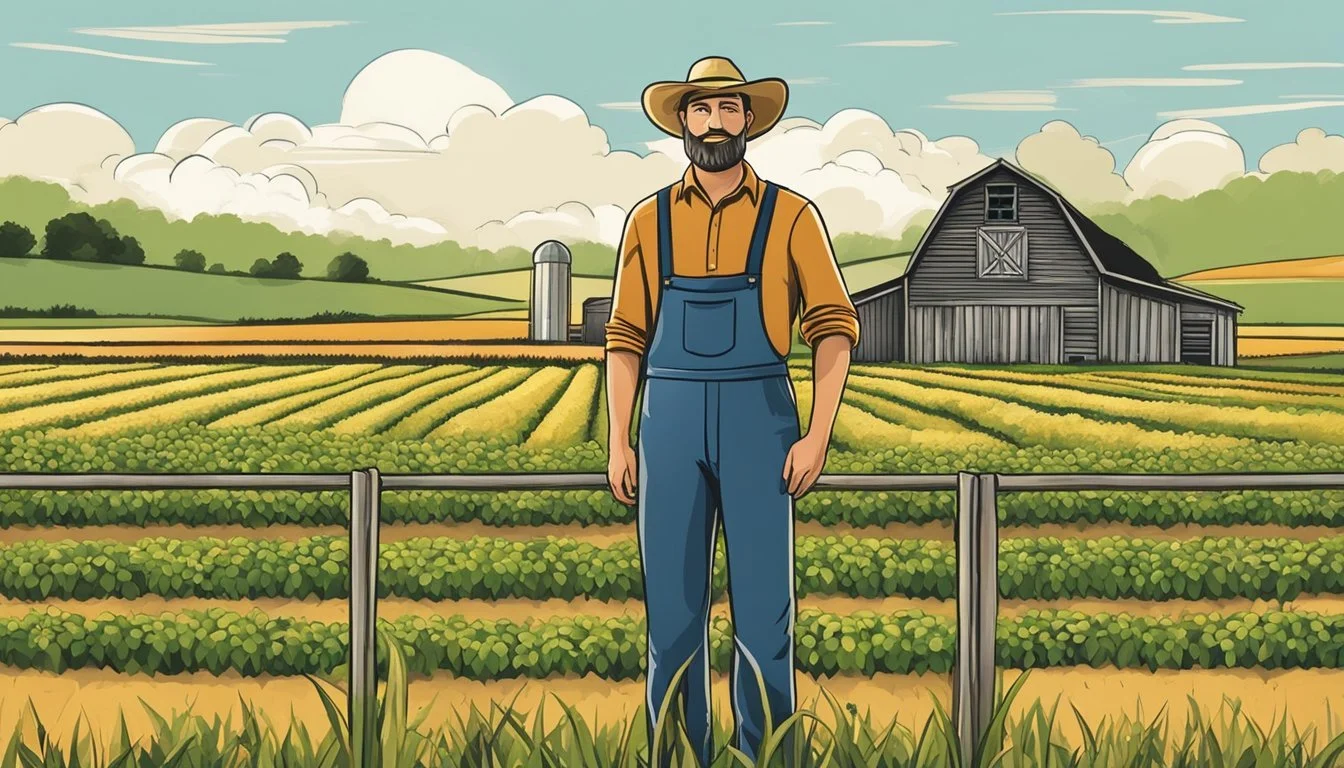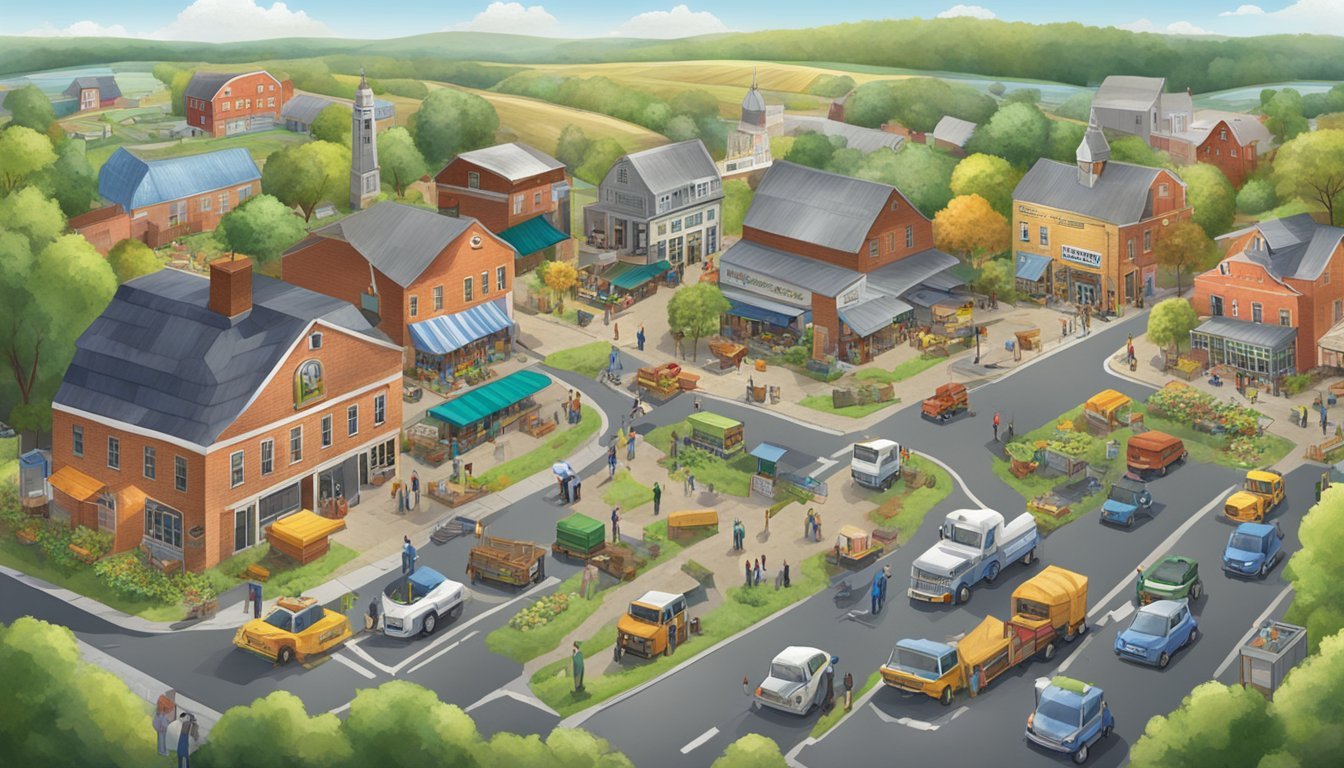Right to Farm Law in New York
Understanding Agricultural Protections
The Right to Farm Law in New York serves as a foundational piece of legislation intended to sustain and protect the agricultural industry within the state. Amidst growing urbanization and the expansion of residential areas into traditionally rural landscapes, this law acknowledges the significance of farming to New York's economy and cultural heritage. By safeguarding the rights of farmers, the state aims to foster a robust agricultural sector, thereby securing irreplaceable state assets and maintaining the scenic beauty of New York's countryside.
At the heart of New York's Right to Farm Law is the prevention of nuisance lawsuits against farmers who employ standard agricultural practices. As urban residents increasingly migrate to rural settings, the potential for conflict between new homeowners and established farming operations escalates. The legislation stands as a shield for qualifying farmers and ranchers, ensuring that the continuation of regular farming activities is not hindered by the legal challenges brought by those unaccustomed to the reality of living near working farms.
Further, the law also touches upon the creation of agricultural districts, setting parameters for their formation, and providing additional layers of protection and incentives for farmers within these designated zones. This structure not only encourages the presence of agricultural activities but also delineates clear expectations for both farmers and their non-farming neighbors regarding the coexistence of disparate land uses.
Overview of New York Right to Farm Law
In New York, the Right to Farm Law is a legislative framework designed to support and protect the agricultural activities of farmers within the state. It acknowledges the importance of farming and the challenges faced by the agricultural community, particularly in areas where urbanization poses potential conflicts between agricultural and non-agricultural land uses.
Key Components of New York's Right to Farm Law:
Agricultural Districts: These are areas within New York State designated to promote the agricultural industry and protect farmlands.
Agricultural Practices: The law provides guidelines on what constitutes "sound" agricultural practices necessary for on-farm production and marketing.
Legislative Background:
Article 25AA of the New York State Agriculture and Markets Law: This article forms the basis of the Right to Farm Law, outlining the terms and purposes of agricultural districts.
Section 308: Defines what comprises 'sound agricultural practices' and the process for the adjudication of potential disputes.
Protection Measures:
The law protects qualifying farmers and ranchers by:
Shielding them from nuisance lawsuits brought forth by individuals who move to rural areas and later contest farming operations.
Promoting agritourism as a beneficial component of the state's agricultural economy.
State Advisory Council on Agriculture:
An entity involved in advising and formulating policies pertinent to agriculture in New York, playing a role in the administration of Right to Farm protections.
In sum, New York's Right to Farm Law is a crucial policy instrument that preserves agricultural interests, mitigates conflict between farmers and their neighbors, and sustains the state's scenic landscapes while fostering a robust agricultural sector.
Purpose and Protection Under the Law
The Right to Farm Law in New York underpins the state’s commitment to preserving and safeguarding its agricultural resources. Protecting farmland and related operations is central to the law’s purpose, promoting a resilient agricultural economy. It also supports agricultural commodities through recognition of farming as a key economic contributor.
New York classifies its agricultural lands as vital assets, emphasizing the importance of both conventional and agrarian practices that adhere to established sound agricultural practices. This classification is essential in shielding farmers and their farming operations from undue nuisance lawsuits, particularly those that might arise from the expansion of non-agricultural development into rural areas.
The law's provisions afford farmers a degree of certainty that their right to farm will be honored, provided they utilize sound agricultural practices. This assurance allows them to invest in and sustain their production methods confidently. New York’s legislation clearly delineates that agricultural practices, when performed reasonably and according to acceptable standards, should not be impeded by external pressures.
The Right to Farm Law effectively establishes a safeguard for farming activities against encroachment and complaints from neighboring non-farming uses. It underlines the significance of maintaining the scenic beauty of New York while fostering the development of the state's agricultural land, aspiring to balance economic progression with environmental stewardship.
Implementation by State and Local Authorities
In New York, the implementation of the Right to Farm Law involves various state and local authorities, each playing a defined role to support and regulate agricultural activities.
Role of the Commissioner of Agriculture and Markets
The Commissioner of Agriculture and Markets acts as a central figure in implementing the Right to Farm Law. They consult with the Advisory Council on Agriculture to issue opinions on whether certain agricultural practices are sound and in compliance with regulatory standards. Additionally, they oversee the Agricultural Assessment program, ensuring fair property valuation for farmland.
Function of the Advisory Council on Agriculture
The Advisory Council on Agriculture assists the Commissioner by offering expertise on diverse agricultural practices. This expert body provides insights that help shape policies and opinions, ensuring that farming methods align with industry standards and contribute positively to New York's agricultural economy.
Local Municipality Responsibilities
Local municipalities have distinct responsibilities under the Right to Farm Law. These include:
Collaboration with the County: Working closely with the county legislative body to define and protect agricultural districts.
Agricultural Districts: Facilitating proposals for the creation or modification of these districts, based on land use and ownership criteria. Proposals are subject to approval by the county legislative body.
Oversight of Land Uses: Regulating land uses within their jurisdiction, ensuring that agricultural practices are permitted and valued as significant contributions to the local economy and heritage.
Local entities must balance agricultural interests with development goals, maintaining a supportive environment for farming while enabling sustainable growth and land use planning.
Eligibility and Creation of Agricultural Districts
In New York, to be eligible for creating an Agricultural District, landowners must meet specific criteria set forth by the state, and go through a detailed review process that involves various levels of government, including the Commissioner of Agriculture and Markets.
Criteria for Agricultural Districts
Eligibility for inclusion in an Agricultural District hinges on several factors. Firstly, individual landowners or a collective group must own a significant amount of land. The law stipulates that the landowner(s) must own at least 250 acres of the land proposed to be included in the district. In cases where a group of owners is making the proposal, the collective ownership must comprise the greater of either (1) 500 acres or (2) at least ten percent of the land proposed for the district.
The core aim of Agricultural Districts is to encourage and protect the agricultural viability of the land. As such, eligible land must be shown to be actively used for farming operations, contributing to the production of food, fiber, or other agricultural products.
Application and Review Process
The process of creating an Agricultural District begins with a proposal submission to the county legislature. This proposal should outline the intentions for land use and demonstrate how the criteria are met.
After submission, the County Land Preservation Board (CLB) assesses the viability of farming in the area, the presence of viable farmland, the degree of other land uses, and the county development patterns and needs. Following their review, the CLB's findings and the district plan are submitted to the Commissioner of Agriculture and Markets for approval or further recommendations.
Should the Commissioner of Agriculture and Markets approve the proposal, the district is formally created, conferring certain protections to promote the longevity and success of farms within the district.
Rights and Obligations of Property Owners and Farmers
This section explores the balance of interests between property owners and farmers, specifically addressing farm operations near residential areas and the mandated disclosures during real estate transactions.
Farm Operations and Neighbor Relations
Rights and Restrictions: Farmers in New York have certain protections under the right-to-farm law, aimed at maintaining a robust agricultural economy and preserving farming activities against nuisance lawsuits from neighbors. This law supports agricultural operations by safeguarding qualifying farmers from complaints related to regular on-farm production that may arise from adjoining property owners. For example, if a property owner purchases real estate near a farm, they cannot file a nuisance lawsuit against normal farm operations they find disruptive.
Farm Structures and Equipment: The law recognizes farm equipment and structures as critical components of farm operations. Farmers must utilize such equipment and construct farm buildings in a manner consistent with good agricultural practice, whereas neighboring property owners must accept such legally sanctioned activities as the norm.
Disclosure Requirements for Property Transactions
Real Property Law Compliance: Section Three Hundred Thirty-Three-C of the Real Property Law requires sellers of real property to disclose proximity to farm operations to potential buyers. This disclosure helps inform prospective property owners of the existence of farming activities and their potential impacts, such as odors, noise, or dust, fostering transparency during real estate transactions.
Disclosure Document: The Right to Farm Disclosure Requirements mandate that sellers provide a disclosure notice stating that the prospective real estate is within an agricultural district or if proposed agricultural district inclusion is ongoing. This written notice helps ensure that new property owners are aware they are moving close to a working farm, thereby minimizing potential conflicts with farm owners.
Conflict Resolution and Legal Proceedings
In New York, the Right to Farm Law has specific provisions that aid in handling conflicts between agricultural operations and neighboring entities. This section underscores the process through which disputes are resolved and the legal parameters for action against farming practices.
Resolving Disputes and Nuisance Claims
Conflicts that arise between farms and their neighbors are often rooted in nuisance claims. These may involve issues of noise, odor, or other disturbances. Under New York law, a farm that is part of an agricultural district or has been in operation for more than one year is shielded against private nuisance lawsuits, provided that the farm follows sound agricultural practices.
Notice Requirement: Before any nuisance proceeding can be finalized, plaintiffs are required to provide notice to farmers. This notice serves as an initial step to open a dialogue and potentially resolve the matter without progressing to a legal proceeding.
Personal Injury and Wrongful Death: In cases where a nuisance claim involves allegations of personal injury or wrongful death, plaintiffs may proceed under the New York Civil Practice Law and Rules.
Guidelines for Legal Action Against Farming Practices
When disputes escalate, and a resolution is not forthcoming, individuals may resort to legal action. However, New York’s Right to Farm Law outlines strict guidelines to regulate and often limit such actions:
Public Nuisance: The case must show that the farming practice at issue affects public health or safety to qualify as a public nuisance.
Civil Practice Law and Rules: Any lawsuit filed must comply with the New York Civil Practice Law and Rules. These rules dictate the procedure for civil legal actions, including those related to farm operations.
It's important to note that for a farming practice to be challenged successfully, it must be proven that the practice is not part of the normal farming operation or is being conducted negligently or illegally.
Impact on Community Growth and Non-farm Development
The Right to Farm Law in New York significantly shapes the interface between agricultural prosperity and the expansion of non-farm development. It provides a statutory framework that balances the needs of the agricultural sector with the growth imperatives of local communities.
Balancing Agricultural and Non-farm Interests
At the heart of New York's Right to Farm Law is the goal of fostering a robust agricultural economy while simultaneously accommodating non-farm development. Land use regulations on a local level are impacted by this law, which aims to support marketing and agricultural land preservation as irreplaceable state assets. Communities must navigate the nuances of this law to ensure that the rights of farmers are protected, while also planning for residential and commercial growth that can coexist with farm operations.
Construction and Development in Agricultural Areas
In areas designated as agricultural districts, there are specific guidelines that govern construction and development. These regulations serve to protect the real property rights of farmers against the potential negative impacts of new development. Local authorities need to carefully plan and assess construction proposals to ensure they are in alignment with sustainable agricultural practices and do not unduly encroach upon productive farmland. Development projects must also include considerations of agritourism and the scenic beauty of the state as outlined in New York's constitution, reflecting a commitment to maintaining the state's agricultural heritage alongside its development objectives.
Supportive Programs and Resources
New York State provides various programs and resources designed to support the integration of agricultural practices with environmental stewardship. This ensures that farming operations contribute to both a robust agricultural sector and the preservation of natural resources.
Agricultural Environmental Management (AEM) Program
The Agricultural Environmental Management (AEM) Program is a key initiative that assists farmers in making cost-effective and science-based decisions to help meet business objectives while minimizing environmental impacts. This voluntary program coordinates with local Soil and Water Conservation Districts to craft comprehensive farm plans that emphasize sustainable practices. The AEM Program, supported by the expertise of the U.S.D.A. Natural Resources Conservation Service, provides a structured, tiered approach to help agricultural producers improve environmental health and the efficiency of their operations.
Tier 1: Education and outreach
Tier 2: Farm assessment and planning
Tier 3: Conservation plan development
Tier 4: Implementation
Tier 5: Evaluation and review
Farmers participating in the AEM Program benefit from a blend of technical assistance and potential eligibility for financial incentives to implement the outlined plans.
Collaboration with Educational Institutions
The New York State College of Agriculture and Life Sciences plays a pivotal role in supporting the agricultural community through research and extension programs. By partnering with the college, the AEM Program gains access to cutting-edge research and educational resources, which bolster its ability to serve New York's farmers effectively.
These collaborations are instrumental in disseminating knowledge on agricultural best practices and sustainable management techniques, empowering the farming community to balance productivity with environmental responsibility. It also fosters the development of new, innovative strategies tailored to the diverse needs of New York agriculture — ranging from crop production to livestock management.
Future Prospects and Continuing Education
New York's Right to Farm Law continues to adapt, focusing on legal reforms and the integration of modern technologies, ensuring that agriculture remains a sustainable and vital part of the state's future.
Ongoing Legal Reforms and Community Education
Recent legislative efforts have aimed to strengthen the role of local farms within New York's economy. These laws strive to balance growth with the protection of farmland. Community education plays a crucial role in this, informing stakeholders about the importance of agriculture and the specifics of current and upcoming legal protections. Local governments and organizations are conducting workshops and seminars to educate the public about these reforms and their implications for agricultural sustainability.
Evolving Agricultural Practices and Technologies
New York’s agricultural sector is evolving through the adoption of cutting-edge practices and technologies, such as precision agriculture and sustainable farming. These advances promise to enhance productivity while minimizing environmental impact. Educational programs are crucial to ensure that farmers and agricultural workers remain at the forefront of these innovations. They cover a range of topics:
Sustainable land management
Use of drones for crop monitoring
Renewable energy sources in farming operations
By investing in these aspects of education, New York is positioning its farm sector to thrive amid changing economic and environmental landscapes.









